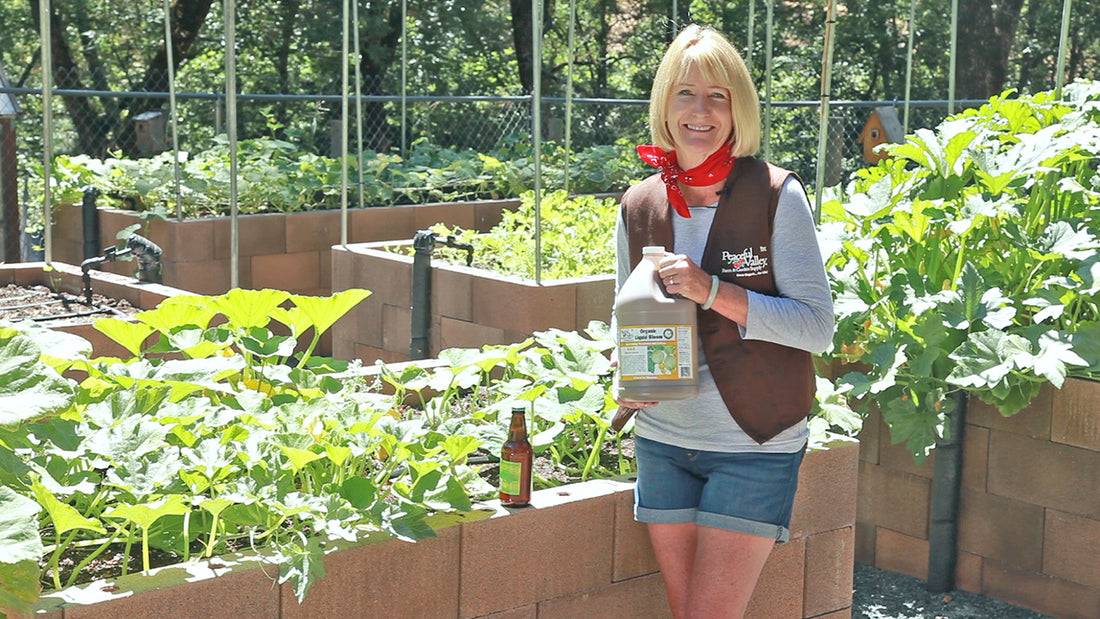Common Methods with No Benefit
Many gardeners have learned a lot of old fashioned of gardening tricks from their parents or grandparents. In their day, they did not run to the store every time they needed something for their garden. Instead, they used what was available, like egg shells, to improve their soil.
Some old-fashioned methods work, but there are some ideas that are purely garden myths! Watch our video where Tricia talks all about some common fertilizing myths.
Myth 1- Beer is a great fertilizer
Beer is mostly water, high in sugars, and has natural microorganisms – three things a garden likes, right? Actually, this is an expensive way to achieve the same results as just using regular water. The sugars and yeast in beer are no better for your soil than they are for you. Alcohol is also not good plant food.
Save the beer for your next garden party and stick with proven fertilizers to boost your soil’s microbiology and nutrients.
Myth 2 - Bury a banana peel to boost potassium in your soil
Bananas are a good source of potassium for people, why not feed your garden with the leftover peel? While adding a banana peel or two won’t hurt your garden, it won’t provide the soil the nutrients it needs either. The potassium in peels is in a form that is not quickly available to plants. When you add it to your garden, it may also attract bugs, rodents or other pests.
Put those peels to better use by throwing them in the compost pile or if you have a worm bin, give them a treat.
Myth 3 - Use coffee grounds to lower your soil pH
Coffee is slightly acidic, and it seems to make sense to add used grounds around acid loving plants like blueberries and azaleas. However, coffee grounds actually have very little effect on soil pH. Like banana peels, they mostly act as organic matter. It’s much better to add them to the compost pile or worm bin and feed your acid lovers with fertilizers that are designed just for them.
Myth 4 - Change out your container plants’ soil every year
It’s true that container plants need fresh nutrients and soil added, since they don’t have a soil food web to naturally replenish the soil. However, in most cases the soil only needs changed once every few years. Instead of adding all new soil this year, you can give your container plants a nutrient boost top dressing with a balanced fertilizer.
A good time to change out the soil is when the plants have outgrown the container and it is time to repot into a larger one. Saving money by using free fertilizers is nice, but these tricks don’t give your garden what it needs to grow. So save your scraps for the compost pile or worm bin.
Check out our blog on fertilizer textures for more information on what does work in your garden space! For other myths, see our recent blog on veggie gardens.
Fertilize effectively, and grow organic for life!


5 comments
But burying banana peels in the garden provides fun food for the worms that roam there. They told me so. And then they’ll poop out good fertilizer, though you won’t know exactly where it is. If you want it somewhere specific, you’ll have to talk it over with the worms. :)
1. While I’ve never claimed to know why it works (I’ve speculated), I have found banana peels to help with aphid issues. I don’t know if it’s the potassium in the peels or if it’s simply some bug killer that was used on the bananas, but I’ve seen a very definite impact on aphid problems by burying a peel or two in the hole when I plant my tomatoes and peppers. Give it a try.
2. In terms of changing out container soil, I think that’s necessary for some people because they get too carried away with fertilizer or other such substances. If the soil is properly maintained, then yes, they may not need to change it out every year, but that very easily may not have been the case – there could even have been issues with watering that resulted in a buildup of salt in the soil. The change out could also be good where crop rotation isn’t an option and they’re planting something that is overly sensitive to a lack of rotation.
What type of fertilizer for my perennial lilacs, gladiolus and iris?
Kojo, you should use a fertilizer with more phosphorus, that is for buds and blooms.
Kojo, you should use a fertilizer with more phosphorus, that is for buds and blooms.